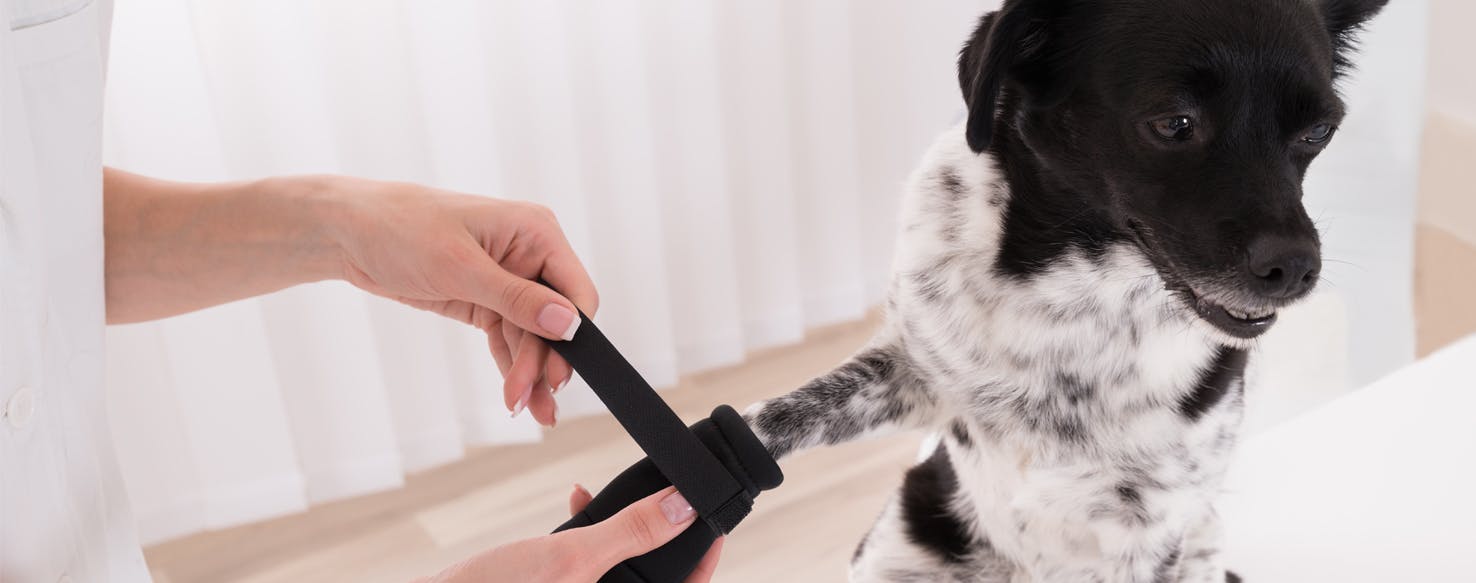Paw pad injuries can not only be extremely painful for your dog, but they can also cause infections. This type of injury is certainly uncomfortable for your dog while walking. The skin on your dog's paw pads is different from any other skin on their body. Your dog's footpads are built to withstand and tolerate quite a bit, as they are the surface between the world and your dog as they navigate. And because your dog puts all of their weight on the feet when they walk, if their paw pads are injured, they may have a difficult time getting around.
There are different kinds of paw pad injuries, from lacerations to burns and bruises. But no matter the kind of paw pad injury, it can be detrimental to your dog's mobility, so preventing them is key.
Adjust to weather factors
Weather can be a big factor in your dog’s activity levels and exposure to extreme conditions. If your dog is outside in freezing cold for extended periods of time, their paw pads can be susceptible to frostbite. You will likely see swelling or blisters on your dog's feet if they have been out in the harsh cold and have developed frostbite.
The opposite extreme of frostbite, of course, would be burns from the hot summer sun and hot asphalt or sidewalks. If you and your pooch live in a hot climate or experience summer heat seasonally, be cautious of having them outside in the heat of the day without protection on their paws. To prevent either frostbite or burns on your dog's paw pads, keep them inside during extreme weather conditions.
If your dog must go out for exercise or elimination purposes, give them a path away from ice or hot asphalt to protect their paw pads. Clearing ice from walkways or avoiding iced-over surfaces and walking directly in the snow will give your dog a better chance of avoiding slicing their skin on sharp ice. Hosing off hot surfaces such as asphalt or hot patios in the heat of the summer will cool down the surface enough for your dog to walk over them.
Keep the feet clean
Yeast is a common factor in paw pad injuries. If your dog is constantly gnawing and chewing on their feet or licking their toes, it is likely they have yeast growing on their paws, causing extreme discomfort. Keeping your dog's paws clean and keeping the hair between the pads trimmed is a great way to prevent yeast from growing. If your pooch is chewing on their paw pads or licking incessantly between the toes, bathing the feet each day with an anti-fungal shampoo will help clear the yeast and heal the skin irritations caused by the licking and chewing.
You can also add probiotics to your dog’s diet to help the body get rid of the yeast. Probiotics can be added directly to your pup's food or given as a treat in supplement form. Adding a low sugar yogurt to your dog’s meals is easy to do, and they will love the taste. Less yeast can diminish the desire to chew on the paws, which could mean fewer yeast infections and sores caused by the chewing and licking. Keeping your dog’s paws clean and dry can prevent irritations and injuries caused by dirt, debris, bacteria, and yeast.
Avoid danger and injury
Whether your dog is in your backyard, on a trail, or at a local dog park, be aware of dangers that can cause a paw pad injury. Sharp sticks and rocks could lacerate your dog’s skin, leading to wounds that could become infected and make walking difficult. Avoid areas where the terrain is rocky and sharp. If you are taking your pup hiking or if your dog is a working dog and is often in areas of rough terrain, talk to your veterinarian about ways to protect your companion's paws while outside.
You can apply wax to the paw pads to protect against scrapes. Doogie boots or shoes are also available for your dog. However, many dogs do not like the way shoes feel and refuse to walk in them. Boots and shoes for dogs also cause your dog to lose traction and the ability to grip the terrain with their feet as they hike or walk. Consider indoor hazards as well as outside ones. In and around your own home, keep your dog away from dangers such as broken glass or toys which could harm their paw pads.
Practice prevention
A little bit of prevention goes a long way. Keeping your dog safe from harm and injury is a big responsibility but not often easy. Depending on your environment and where your dog plays or possibly works, they may injure the paw pads. Avoiding the dangers of paw pad injuries is often less expensive and easier than dealing with the injury itself.
Because your dog uses their feet for every movement, healing can sometimes be a long process. No one wants a pup who is injured in any way, but dealing with injuries that could affect their mobility can make life difficult for your dog and for you.


